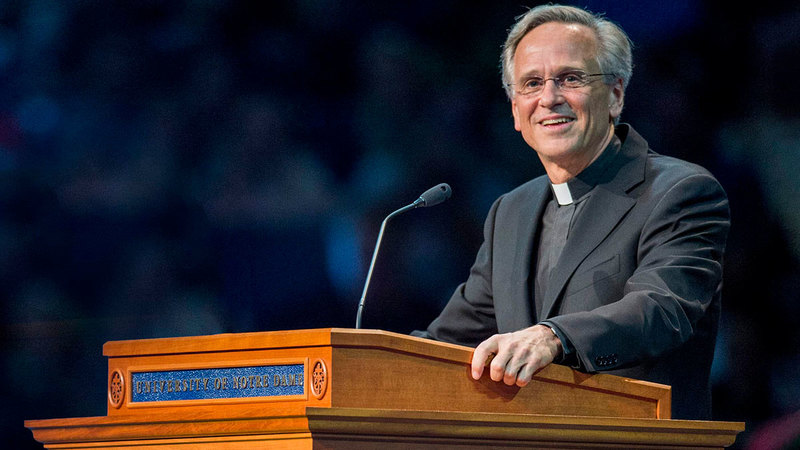
President's Annual Address to the Faculty 2019
September 17, 2019
DeBartolo Performing Arts Center, Decio Theatre
Let me begin by thanking you who are with us today and thanking and congratulating all faculty, whether they are here or not, for all you do and for your accomplishments. 2018-19 was another year of which we all should be proud. Faculty research received $181 million in research awards — a 27 percent increase from the previous year. Worthy of note is not just the dollar amount, but the range of funded projects, reflecting the diverse ways in which Notre Dame is a force for good through you.
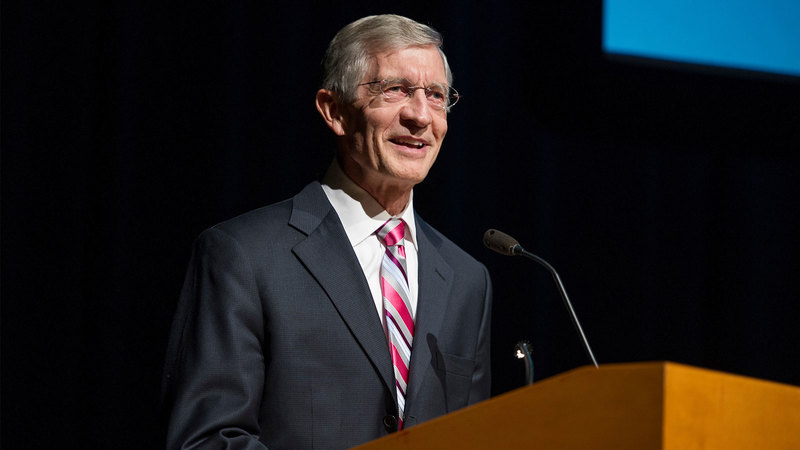
Introduction by Provost Tom Burish
In his final year as Charles and Jill Fischer Provost, Tom Burish reflects on his work with University faculty before introducing Fr. Jenkins.
Introductory comments- A $5.9 million grant award, part of a larger $33.7 million pledge from Unitaid, was for research on a strategy to prevent mosquito-borne diseases, such as malaria. The Principal Investigator is John Grieco in the Department of Biological Sciences and associate director of the Eck Institute for Global Health.
- A $1.8 million grant went to a study of the well-being of pastors and priests engaged in ministry. That study will be led by Matt Bloom of the Department of Management and Organization and director of the Wellbeing at Work Program.
- A $900,000 grant that is part of a $2.1 million commitment will seek to incorporate science and the philosophy of science in a conversation with Indian and Pakistani madrasas, centralized institutions aimed at preparing Islamic religious leaders. That work is led by Ebrahim Moosa, professor of history and Islamic studies in the College of Arts and Letters and the Keough School of Global Affairs.
- A $90,000 grant was awarded to Patrick Thomas, founding director of the Notre Dame Tax Clinic, for the training and supervision of law students who represent low-income clients in disputes with the IRS.
- Finally, $21.5 million, part of a $42.5 million, five-year commitment from the Lilly Foundation, will support the development of the broader South Bend-Elkhart region as a leader in next-generation manufacturing, entrepreneurship, applied analytics and technology.
I also want to congratulate our colleague Azareen Van der Vliet Oloomi in the English department for winning the 2019 PEN/Faulkner Award. Congratulations also to Robert Audi, Declan Kiberd and Dianne Pinderhughes for their election to the American Academy of Arts and Sciences. Finally, congratulations to Kiera Duffy, Head of Undergraduate Voice Studies, who performed with both the Cleveland Orchestra and the Berlin Philharmonic earlier this year.
I mention these grants and recognitions from the many that I could mention because they reflect the array of ways in which your scholarly contributions enrich the world.
Above all, I thank all of you for your dedication to the day-to-day work of teaching, research and administration. You do the work of the University of Notre Dame.
I have a range of topics to address, and they are listed on this slide.
- Provost Tom Burish
- The Provost Search
- The Columbus Murals
- Affordability and Financial Aid
- The ND Voice Survey and Fostering a ‘Speak Up’ Culture
- The 2019-20 Forum: “Rebuild My Church”
- Vatican Dialogues on Climate Change and Campus Sustainability Initiatives
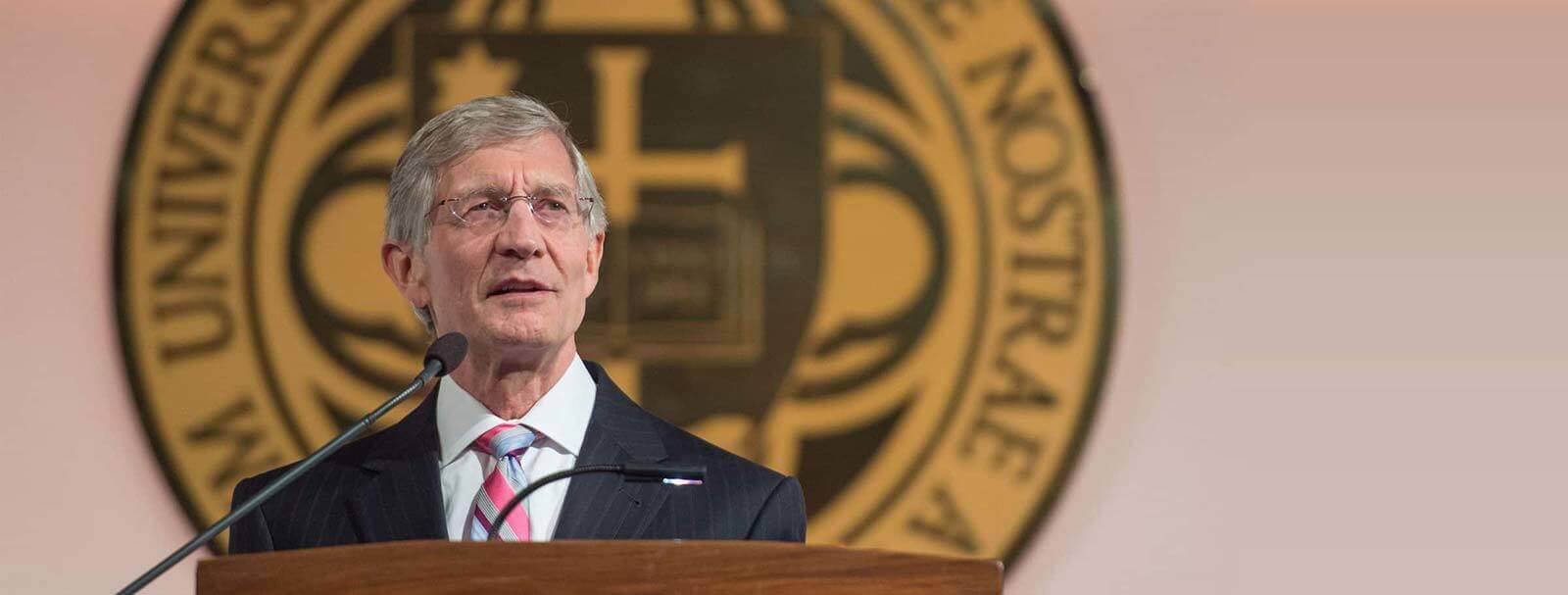
Provost Tom Burish
As you know, Tom Burish announced that he would step down as provost at the end of this academic year. Tom asked that, in various public statements about the transition, we do not give laudatory tributes for his work of his nearly 15 years as provost. I countered that his time in the provost’s office was one of extraordinary progress for Notre Dame, and that it is important for the University community to acknowledge and celebrate that progress. Abraham Lincoln, after a particularly contentious meeting with his seven cabinet members, is said to have reported, “The vote was seven to one against, but I prevailed.” Similarly, in my discussion with Tom about remarks on his tenure, I prevailed despite his objections. I will not attempt to be exhaustive, but will give a few highlights of our progress under Tom’s remarkable leadership.
“As is fitting for someone who is at the same time so humble and so capable, he has devoted himself to enabling the rest of us to flourish, and for this I am — and I believe we are — deeply grateful.”
Undergraduate education has been Notre Dame’s strength, and it has become even stronger during Tom’s provostship. We have enjoyed the greatest gains in the University’s long history in the quality and diversity of, and financial support of our students. Since 2005, applications have increased 96 percent, reaching a new record this fall of 22,200; the admit rate has gone from 32 percent to under 16 percent; this fall 35 percent of the first-year class are U.S. students of color or international citizens, compared to 24 percent in 2005. Don Bishop, our associate vice president for enrollment, tells us that the number of incoming first-year students ranked in the top 1 percent of their high school class or in the top 1 percent of the national test scores (SAT/ACT) is now four times higher than in 2005 — over 70 percent of the class.
Tom has been adamant that, when such talented students come to Notre Dame, we must teach them well. Anyone involved in the hiring, tenure and promotion processes knows the emphasis the provost has placed, and asked deans and departments to place, on ensuring the high quality of teaching for our students. A change in our course evaluation instrument allows us only to look back from the current year to 2008-09. From AY08-09 to last year, the overall composite mean for undergraduate classes increased from 4.03 to 4.32, and in graduate courses it increased from 4.14 to 4.33.
While undergraduate education remains Notre Dame’s strength, Tom saw the potential 15 years ago for growth in research and graduate studies, and he led the University to realize that potential. Total research expenditures have increased from $82 million in 2006 to $220 million in 2018. During that time, investments in the Graduate School have increased by roughly 85 percent.
The University’s significant research investments included the development of clusters in the areas of nanotechnology, global health, energy, environment, imaging and advanced studies. Notre Dame also created the Harper Cancer Research Institute — a partnership with Indiana University School of Medicine-South Bend dedicated to innovative and integrative basic and clinical research in oncology. Tom urged the building of Innovation Park at Notre Dame, a research park designed to help transform innovation and discoveries into viable commercial ventures, and he launched the IDEA Center, a collaborative hub dedicated to expanding the impact of innovations of our faculty, students and staff.
Another sea change in the life of the University has been its growing internationalization. Notre Dame has in the past decade or so enhanced existing partnerships across the globe and developed many new ones, establishing Global Gateways in Beijing, Dublin, Jerusalem, London and Rome. In 2014, the Donald R. Keough School of Global Affairs was established, the first new college or school at Notre Dame in nearly 100 years. Seventy-four percent of our undergraduates who are US citizens obtain some portion of their credits in an international program, putting Notre Dame 2nd among research universities.
This past week we received further striking evidence of Notre Dame’s progress. We all know that popular rankings of academic institutions must be taken with many grains of salt, as changes in criteria seem more designed to sell magazines and newspapers than to determine genuine academic quality. Nevertheless, in perhaps the most influential of such rankings, the US News & World Report Best Colleges, Notre Dame achieved its highest ranking ever at 15th among research universities. This is good news for us in itself, but an interesting component of this particular ranking is a survey sent to university presidents, provosts and admissions officers across the nation asking them to rank the academic quality of universities on a scale of 1-5, with 5 as highest. Notre Dame had been steadily ranked at 3.9, but in the 2017 ranking we moved to 4.0. In 2018 we went up to 4.1, and this year, which is the 2020 ranking, we rose further to 4.2. In the past six years of these surveys, no other U.S. research university ranked higher than 40th has risen .3 in this peer ranking, but we made that improvement in just four years. The conclusion is clear: in the opinion of university leaders across the nation, through your work and under Tom’s leadership, no other highly ranked research university has improved more dramatically than the University of Notre Dame.
Tom would be the first to insist that all this progress is due not to him, but to the dedicated and talented faculty at Notre Dame, and to the deans, associate provosts, department chairs, institute and center directors and many others who support the University’s central work of education and research. Among Tom’s greatest strengths is the humility to direct his efforts to enabling others to flourish. Yet I have had the privilege of working closely with Tom for almost 15 years, and I have witnessed how his insight, clear and consistent sense of priorities, uncompromising standards, willingness to make tough and often unpopular decisions, selflessness and his truly tireless work ethic have all enabled him to unlock so successfully the potential of his colleagues and of Notre Dame. As is fitting for someone who is at the same time so humble and so capable, he has devoted himself to enabling the rest of us to flourish, and for this I am — and I believe we are — deeply grateful.
It has been a true blessing for me to work for the past 15 years alongside someone who I believe has been, quite simply, the most effective provost in American higher education. If I were asked what days were most pivotal in my tenure as President of Notre Dame, I would have to include the day Tom Burish agreed to come and be our provost.
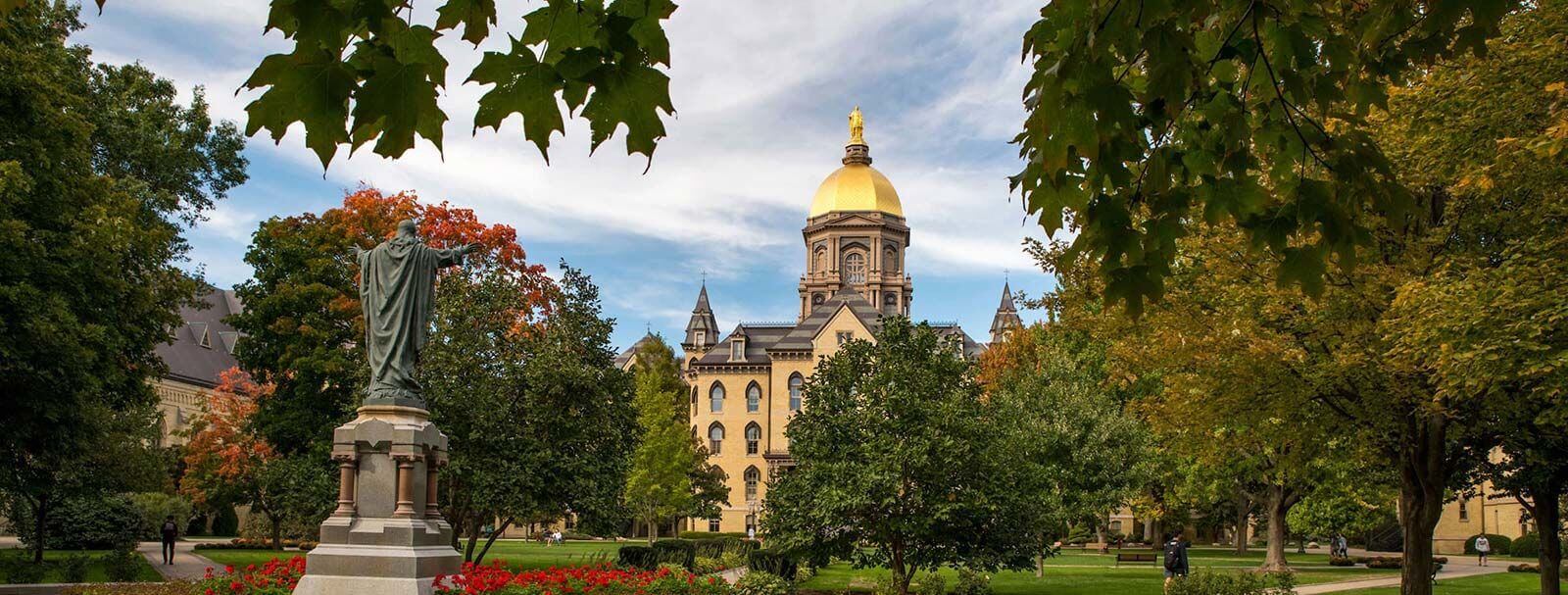
The Provost Search
Our daunting challenge, then, is to find a leader who can build on the successes Tom has so ably inspired and overseen. The process for appointing a provost is described in the Academic Articles. Its first step is the selection by the Academic Council of five faculty from its elected members and one student from its student representatives, and that was accomplished at the Aug. 29 meeting of the council. I have the option of appointing three more faculty and one more student, and I used my appointments to ensure greater coverage of colleges, the presence of a distinguished non-tenured faculty member, the presence of a graduate student and a faculty member who knows from first-hand experience the day-to-day operation of the Provost’s Office. The articles stipulate that I chair the committee, and I have asked Ann Firth, my chief of staff, to staff the committee.
“We will in coming weeks set up listening sessions with faculty, staff and students to identify characteristics and qualities of the ideal candidate and develop a prospectus that will be shared with candidates and those we ask for recommendations.”
I thank all of these colleagues for their willingness to serve.
Recently, in response to a Faculty Senate resolution of Nov. 6, 2018, Tom Burish put together a faculty committee to review and suggest improvements in the process for the searches for deans. The committee did excellent work and made sound recommendations. Although its mandate was with regard to searches for a dean and not a provost, the key principles and recommendations can and should be applied to the current search for a provost. Some key points are the following:
- The search committee should provide opportunities for faculty, staff and students to express their views on the characteristics and qualities of the ideal candidate.
- Informed by the views they have heard and by their own discussions, the committee should develop a prospectus articulating the desired qualities.
- Special efforts are to be made to attract women and underrepresented minorities to the candidate pool.
- The search is to be international in scope.
The committee spoke positively of engaging a search consultant to assist in developing the prospectus, identifying possible candidates, encouraging strong candidates to consider exploration of the role and coordinating and facilitating interviews. We have engaged Lisa Prigohzy-Milius of Presidio Executive Search to assist us. Lisa has helped us with many key academic searches at Notre Dame, and, in fact, was a critical partner as search consultant in the process that brought Tom Burish to Notre Dame 15 years ago.
The committee also spoke of the importance of keeping the search process confidential. In a search for a position of this very senior nature, the most highly qualified prospective candidates are often already serving in a good position and are not looking for another. They are engaged in important and meaningful work for institutions that value and rely on their contributions. Indeed, the strongest prospective candidates are often those we must actively seek and, indeed, energetically recruit and not simply select. Such individuals are usually loath to jeopardize their relationship with colleagues and with their institution by being seen to pursue a position at another university. For these reasons, no doubt, we found that effectively 90 percent of search processes at peer institutions are confidential.
We will, then, keep this search confidential and each member of the search committee has signed a formal agreement to keep all discussions and deliberations of the committee, particularly the names of any candidates under consideration, strictly confidential during and after the search. I ask you to respect their commitment and not ask them about the committee’s work.
We will in coming weeks set up listening sessions with faculty, staff and students to identify characteristics and qualities of the ideal candidate and develop a prospectus that will be shared with candidates and those we ask for recommendations. We will then work to identify and recruit a strong pool of candidates, and will begin interviews, which we expect to occur in the second semester. Once we begin our search for candidates, we will make no public statements until we are ready to announce a new provost.
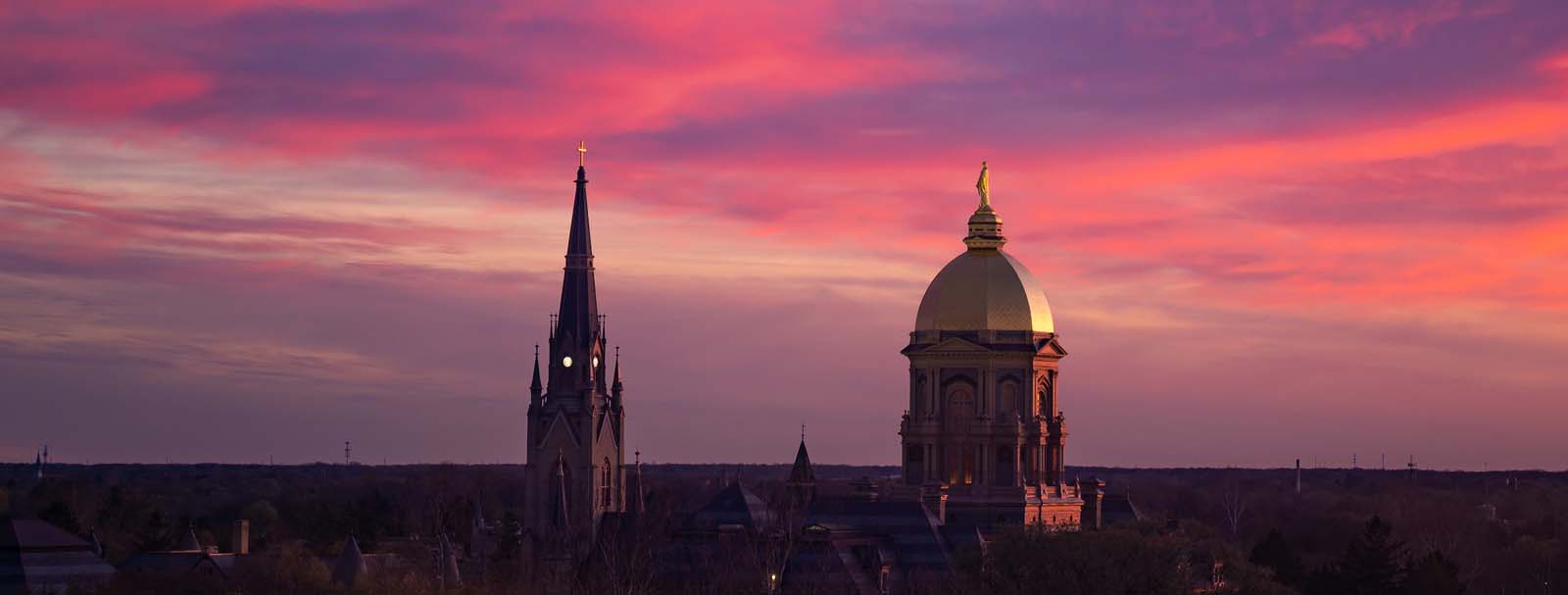
The Columbus Murals
On Jan. 20 of this year I announced that the murals depicting the life of Christopher Columbus on the walls of the ceremonial entrance of the Main Building would not be regularly displayed in their current location, and that the images would be presented in a context that would convey the broader story of their composition and of Native Americans.
Last semester I created a committee of faculty, staff and students who worked through the summer and offered an excellent set of recommendations. I sincerely thank this thoughtful, discerning group for the following superb set of recommendations.
"We need to acknowledge the tangledness and complexity of our history, and each of its many different threads. Some things that we now regard as evil were once regarded as good. Both interpretations are part of the history of Notre Dame."
- Create an exhibition about the early history of the University in the spaces on the second floor of the Main Building that will be vacated by Undergraduate Admissions in 2022. The proposed exhibition would include, together with high-quality reproductions, a history and discussion of the Gregori Columbus murals in their rich and varied historical contexts.
- Install removable coverings over the murals that will feature flora and fauna of this region, whose iconography should be inspired by the holdings of the University’s Greene-Nieuwland Herbarium and the Greene Collection in the Hesburgh Library, and by Christian iconographical motifs and by motifs characteristic of the indigenous peoples of the area.
- Allow faculty who use the Gregori Columbus murals in their teaching and research, as well as other members of the community with appropriate purposes, to continue to access them on occasion.
- Institute a University-wide annual observance of Founders Day and, as part of this commemoration, display and invite dialogue about the Columbus murals in connection with a symposium that explores one or more aspects of Notre Dame’s early history.
- Recognize in a public and tangible way the Native American communities that were so integral to the University’s founding.
You can see the committee’s full report here.
We will undertake in coming weeks and months to begin acting on these recommendations.
Critics of our decision have suggested that it arose from a desire to protect overly sensitive, coddled students and faculty from images that might disturb them, or from a desire to suppress historical facts, or from some embarrassment about the Catholic faith. In fact, the opposite is true on all counts. The images painted in 1882 celebrate achievements and values we embrace today: heroic exploration, the coming of Christianity to the Americas and the rich heritage of European immigrants — particularly Catholic immigrants — to this land. Yet the arrival of Europeans was in many ways, in the words of St. John Paul II, a “harsh and painful reality” for the indigenous peoples of this land. Our goal has been to convey the broader story in both its positive and negative aspects, and to do so from the perspective of our mission as a Catholic university. Patrick Griffin, a member of the committee and the Madden-Hennebry Family Professor of History, eloquently described the task as follows:
“One of our jobs is to muddy the waters. We need to acknowledge the tangledness and complexity of our history, and each of its many different threads. Some things that we now regard as evil were once regarded as good. Both interpretations are part of the history of Notre Dame. As people walk into the Main Building, the living room of the University, they are walking into a complex and very American place. As we situate the history of the University into the broader arc of European history as well as 19th century U.S. history, we must include the history of indigenous peoples and of our Catholic roots. Above all it is critical that our voice be that of a Catholic research university — a distinctive view, rooted in Christianity and a belief in the dignity of all humans.”
These are the ideals we will strive to realize as we implement the committee’s recommendations.
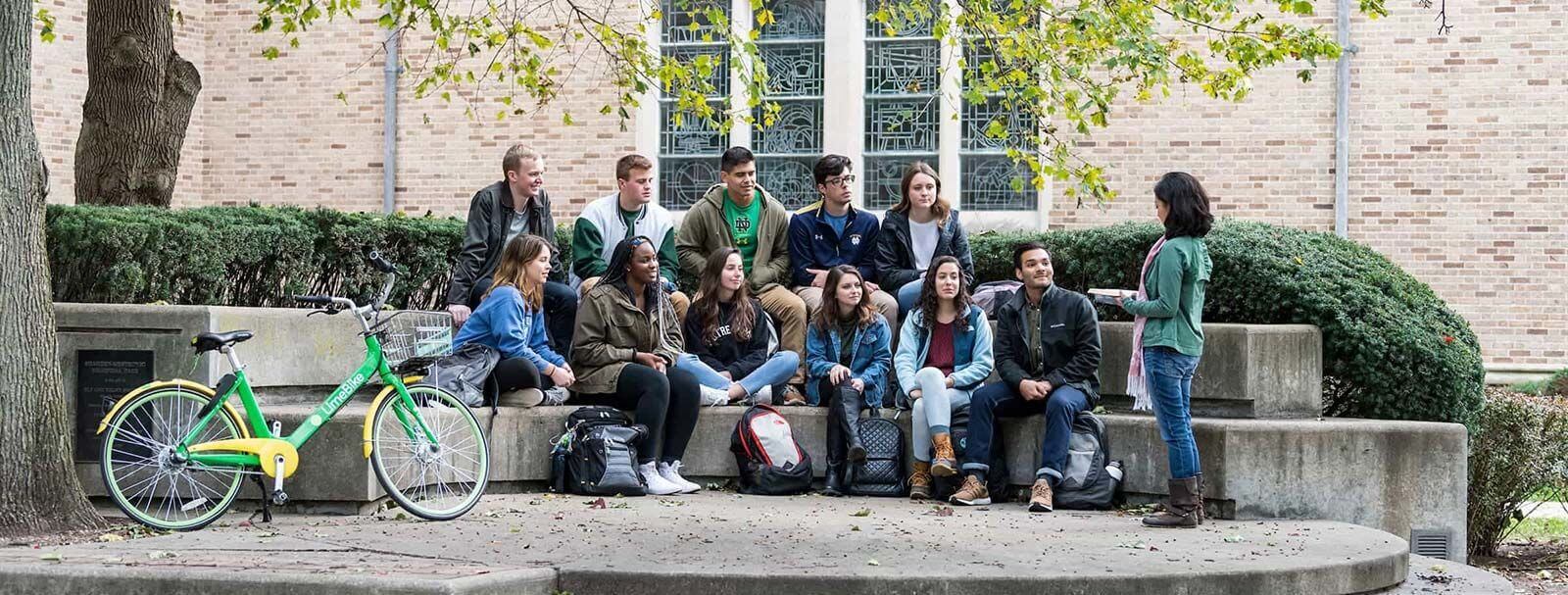
Affordability and Financial Aid
In January of this year the University announced a Staff Retirement Incentive Program, which enabled full-time, non-faculty staff of requisite length-of-service and age to retire with incentive pay. We were pleased to give long-serving employees this help as they retire, and 6 percent of our workforce took advantage.
We used the opportunity of these retirements to review staffing levels and seek efficiencies. As a general rule, for departments from which staff retired under this program, we returned half the funding for these positions, making it necessary for them to reassess work priorities, re-organize and consolidate positions. Although these reductions in positions are a relatively small percentage of the staff of the University, I know that many are working hard to take a fresh look at the work they do, find efficiencies where they can and discontinue tasks of low priority. I am grateful for these efforts.
“We plan to direct all savings from reductions in staffing levels to helping students from lower-income and first-generation families make a Notre Dame education accessible.”
Seeking such efficiencies did not arise from an arbitrary cost-saving decision, but from an effort to address at least partially one of the central challenges facing American higher education: cost and accessibility. We all know of the pervasive criticisms in the press about the high and ever-rising costs of higher education. The high costs are due, in large part, to our commitment to educational excellence, and for that I do not apologize. Yet we cannot ignore the families who must bear a large share of the burden of these high costs. Nor can we ignore the concerns of benefactors who, when we ask for their support, ask us what we are doing to find efficiencies and hold down costs. Our benefactors generally run their own businesses, and they know that they must constantly reassess work priorities and look for efficiencies if their businesses are to thrive, and even if they are to survive.
We plan to direct all savings from reductions in staffing levels to helping students from lower-income and first-generation families make a Notre Dame education accessible.
The funds dedicated to financial aid have risen steadily at Notre Dame, as you can see from this chart. Yet, as you can see from this chart, we lag behind peers in the percentage of our students who are eligible for Pell Grants — a federally funded subsidy to help lower-income students pay for college — and of students from families whose parents did not earn a bachelor’s degree.
At the meeting of the University’s Board of Trustees in October, we will discuss a plan over the course of several years to meaningfully increase the percentage of Pell Grant eligible and first generation members of our student body. To achieve this goal, we will ultimately need to grow our financial aid budget significantly over the next 10 years. We expect about one third of this incremental financial aid growth to be funded by savings from the retirement incentive program. We will need to find more funding from benefaction and other sources for the remaining two-thirds. We are confident that we will do so in pursuit of this important objective.
As I said, I know our retirement incentive program created challenges for departments for which they had to find creative solutions. The savings from these efforts will go to make a Notre Dame education accessible to all admitted students, particularly to students of lower-income and first-generation families. Thus I thank you who made this extra effort, and I am certain that students of the future who will enjoy the benefits of a Notre Dame education will thank you as well.
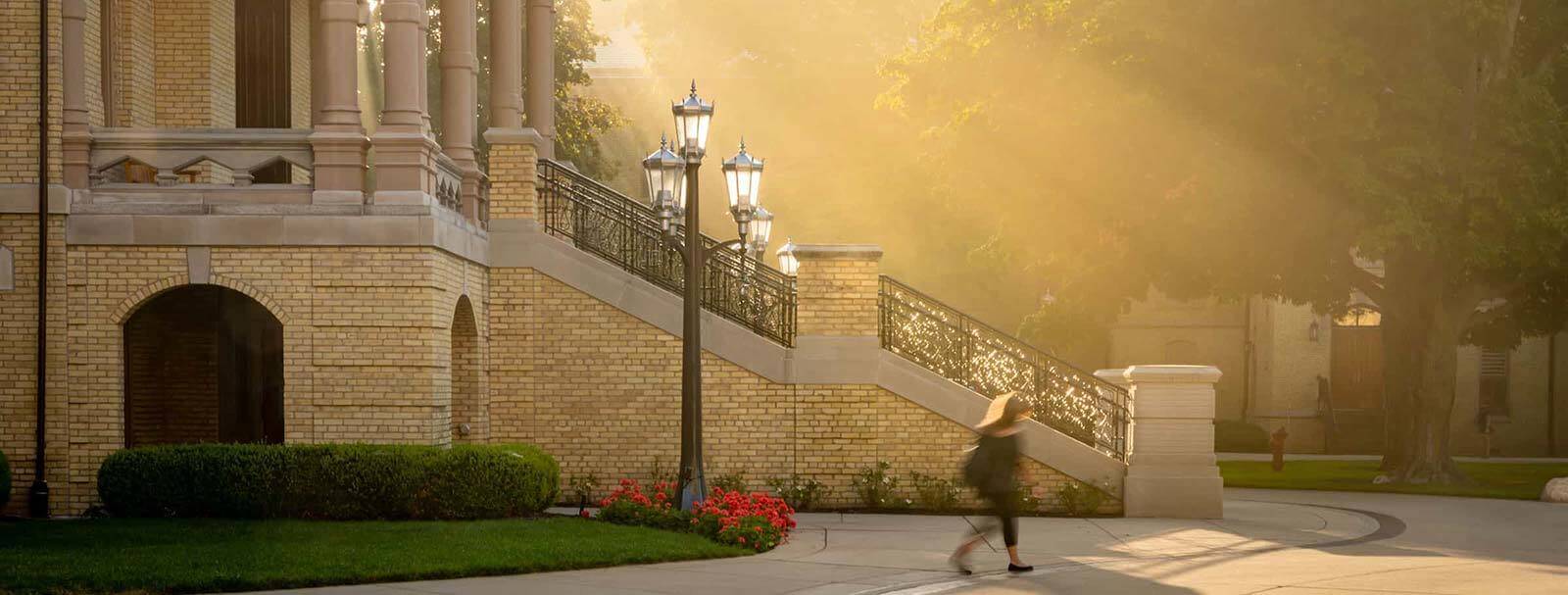
The ND Voice Survey and Fostering a ‘Speak Up’ Culture
In all of life, and perhaps particularly in higher education, reputation is a cherished but fragile commodity. The admissions bribery scandal that broke last March sullied the reputations of respected institutions such as Yale, Georgetown, Stanford and USC. It was a reminder — as if we needed another — that the actions of a few, if not addressed, can do immense damage. We have conducted a thorough review, and we have no evidence of such behavior at Notre Dame. Nevertheless the worst response to such cases would be to assure ourselves that it could never happen here.
“We must act to do the right thing — the ethical thing — for ourselves, for those with whom we work and for the University community. We must do them so that we become ever more the kind of community we seek to be at Notre Dame.”
Recent results from our biannual survey of staff, ND Voice, indicate that we have much of which we can be justly proud. You see in this chart a steady rise in positive responses since the survey was first administered in 2006. The 2019 survey, using a five-point scale, asked respondents whether they agreed with a series of statements. Eighty-six percent of respondents either agreed or strongly agreed with the statement “I am proud to work here.” Eighty-five percent agreed or strongly agreed with “My immediate manager cares about me as a person.” Eighty-two percent agreed or strongly agreed with ”I recommend the University as a great place to work.”
On some other questions on which we have seen more negative responses in the past, there has been improvement. Regarding the statement, “I feel it is safe to speak up,” only 45 percent agreed or strongly agreed in 2006, while that number was 64 percent in the 2019 survey. Regarding the statement, “The University has established a climate where people can challenge our traditional ways of doing things,” only 42 percent agreed or strongly agreed in 2006, but that number was 53 percent in 2019.
While we have seen encouraging improvement on questions reflecting a culture where people feel free to speak up, we must continue to improve. We are taking several steps to understand the responses and strengthen our culture. Among these, I have asked Bob McQuade, our vice president for human resources, to organize a program for discussion sessions to help us explore how we can continue to cultivate a culture in which everyone is encouraged to report policy or ethical lapses, and each employee has an avenue for making constructive suggestions about common work. I have asked all members of the President’s Leadership Council and all members of the Deans' Council to be the first to go through these sessions.
I also take this opportunity to remind you, as I did last year, that the University’s Ethical Conduct Policy requires every employee of the University — each one of us — to report misconduct that you believe has occurred. The University’s Non-Retaliation Policy prohibits retaliation against anyone reporting misconduct, and states that anyone who retaliates will be subject to disciplinary action up to and including dismissal. We have created on the Office of the President website a web page, entitled Reporting Concerns, which lists the various ways in which concerns can be raised or misconduct of any kind can be reported.
We must strive to foster a culture in which concerns are expressed, misconduct is reported, retaliation is eliminated, and constructive remarks, however critical, are heard and appropriately considered. We must do these things, of course, to avoid the reputational and financial damage we have seen at other institutions, and to make our common, collective efforts more effective. Most of all, though, we must act to do the right thing — the ethical thing — for ourselves, for those with whom we work and for the University community. We must do them so that we become ever more the kind of community we seek to be at Notre Dame.
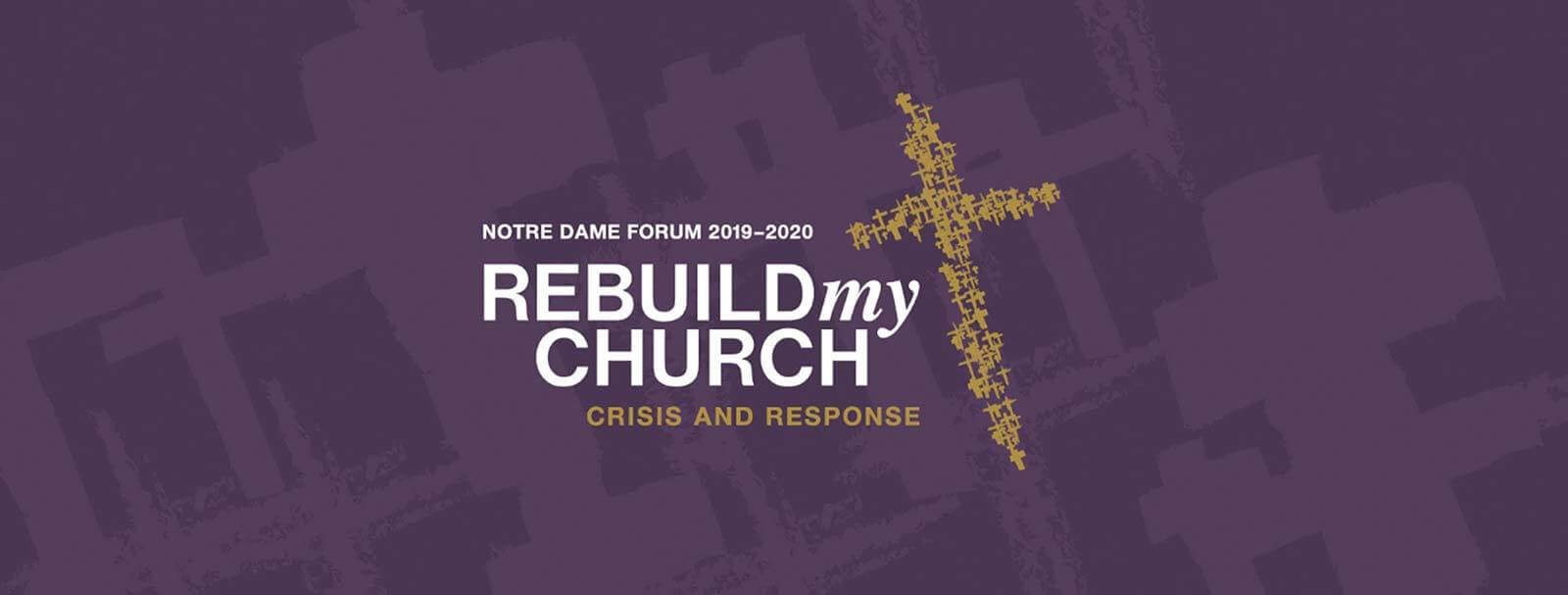
The 2019-20 Forum: “Rebuild My Church”
The clergy sexual abuse scandal in the Catholic Church is a devastating example of the failure by many on several levels over time to respond to serious and damaging misconduct. Our forum this year will focus on where we are now in the process of healing and reform and what further steps are needed.
“Our forum this year will focus on where we are now in the process of healing and reform and what further steps are needed.”
Next week, on Wednesday at 7:00 p.m. in the Leighton Concert Hall we will host a panel, moderated by Vatican journalist John Allen. The panel will include:
- Juan Carlos Cruz, a survivor and survivors’ advocate from Chile, to whom Pope Francis apologized in a three-hour, one-on-one meeting after initially dismissing his complaints.
- Archbishop William Lori of Baltimore, a former member of the bishops’ committee on child protection and who was recently appointed apostolic administrator of the Wheeling-Charleston diocese to investigate allegations of sexual harassment and financial impropriety against the diocese’s former bishop.
- Former FBI executive assistant director Kathleen McChesney, who investigated victim allegations on behalf of the U.S. Conference of Catholic Bishops and helped to establish its “Charter for the Protection of Children and Young People.”
- Peter Steinfels, a journalist who authored the “Beliefs” column for The New York Times for 20 years, and recently examined the Pennsylvania attorney general’s report on Church misconduct in a cover story for Commonweal, where he has been a contributor since 1964.
On the evening of Nov. 13, Archbishop Charles Scicluna will address us. Scicluna, the Archbishop of Malta, has recently been appointed by Pope Francis to lead the Vatican’s fight against sexual abuse and for the protection of minors. We plan to ask the Archbishop to speak to us and then invite questions from our students.
I want to thank the faculty for your contributions so far to the 2019/2020 forum. I also thank Bob Bernhard, our vice president for research, and faculty who are assisting in coordinating and awarding research grants from a $1 million fund for work by Notre Dame faculty on issues arising from the abuse crisis.
We plan to announce other forum-related events later in the year.
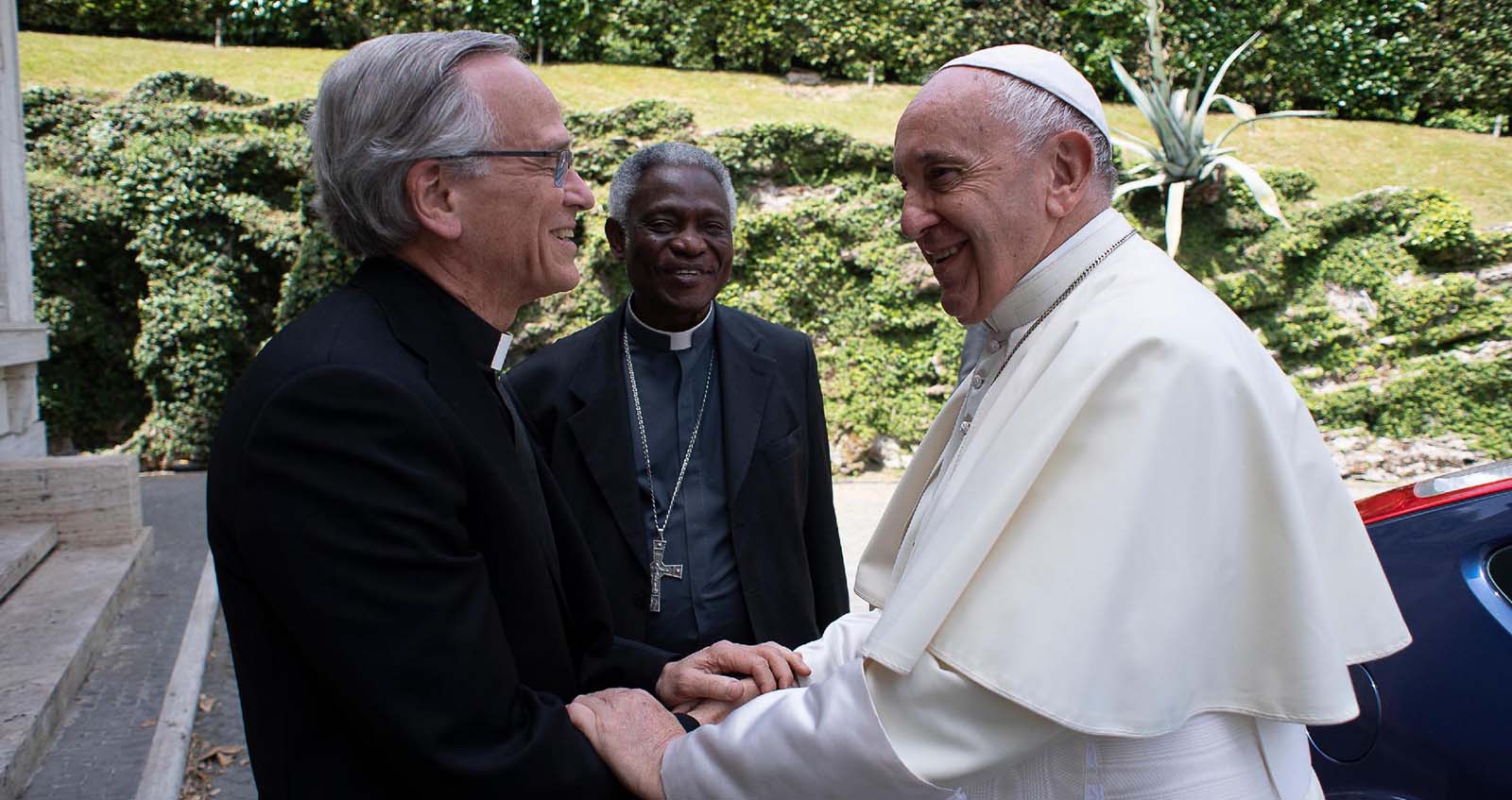
Vatican Dialogues on Climate Change and Energy Transition
This year, and last, principally through the efforts of Carolyn Woo, former dean of the Mendoza College of Business, and Leo Burke, emeritus faculty member in Mendoza, Notre Dame helped convene historic meetings of the world’s leading energy executives and their biggest investors and underwriters to address the environmental concerns expressed by Pope Francis in his encyclical, Laudato Si’.
This past June, I had the privilege of serving as co-chair of the dialogue with His Eminence Cardinal Peter Turkson, prefect of the Vatican’s Dicastery for Promoting Integral Human Development, in a conference entitled “Energy Transition and Care for Our Common Home.” After two days of intense meetings, the participants agreed to two statements, one on the importance of carbon pricing to incent the reduction of carbon emissions and a second on the necessity for disclosures from companies providing clear information on strategies and action, governance process and performance regarding climate change.
I do not know of many other examples of industry competitors gathering for discussion under one roof, not to mention co-signing statements that invited more open reporting and the possibility of further regulation or taxes. All involved deserve credit for participating. Perhaps the most credit goes to Pope Francis, whose prophetic encyclical helped focus the world’s attention. Pope Francis joined us for the final day of discussions and engaged in a candid, unscripted conversation with participants.
A particular irony was that these discussions transpired in the remarkable setting of Casina Pio IV, where centuries ago Galileo was tried for heresy for his scientific theories. In this meeting the Church joined those urging us to embrace the results of science, protect the environment and care for future generations.
As we engage in these broader conversations about the environment, we at Notre Dame must continue efforts to make our campus more sustainable. I want to thank our Office of Sustainability, our executive vice president’s Sustainability Strategy Standing Committee, those in our operations areas who diligently attend to these matters, and all who have contributed to make Notre Dame more sustainable. I am encouraged by the progress we have made.
“Next month, a year ahead of schedule, the last piece of coal will be burned as we transition to other sources of energy.”
The University has burned coal since its founding to warm buildings and light the campus. Next month, a year ahead of schedule, the last piece of coal will be burned as we transition to other sources of energy. Three geothermal projects on campus will reduce nearly 12,000 tons of CO2 annually. Last month, we began construction of a hydroelectric project on the St. Joseph River that will produce up to 7 percent of the campus’s electricity needs, offsetting nearly 10,000 tons of CO2 annually. We have introduced new natural gas-fired combustion turbines in our power plant to reduce emissions and increase capacity. Notre Dame’s solar energy arrays at Fitzpatrick Hall, Stinson-Remick Hall, and the Kenmore Warehouse (currently the largest solar installation in South Bend), and we have agreed to purchase 40 percent of the output from a 20-megawatt solar array planned by Indiana-Michigan Power. In addition, with extensive green roofs on the Joyce Center and other campus buildings, Notre Dame is among the nation’s leaders in this simple innovation that helps conserve energy and improve water quality
We are also building more sustainable buildings. To date, 14 buildings on campus have received LEED Gold or Silver certification as green buildings. Five more are awaiting certification in the next year. All new construction on campus will seek to meet, at a minimum, LEED Silver certification.
Through these and other initiatives, we have achieved a 50 percent reduction in carbon emissions per square foot from 2005 levels — 10 years ahead of our original goal. We will continue these efforts as we seek to make the campus entirely carbon neutral.
Apart from our carbon footprint, we reduced various kinds of waste that makes us less sustainable. Combining conservation with smart technology, we’ve reduced water consumption on campus by 244 million gallons annually. Over the next decade, we hope to divert 60 percent or more of our total waste from landfills. Food waste is the largest source of waste in the world, and we have taken steps to reduce it by preparing less food, diverting consumable food to area charities and converting food waste into clean energy. Campus Dining has also introduced reusable containers at some campus retail dining venues to reduce the waste of disposable food containers.
All these efforts at making our campus sustainable are critically important, but the greatest contribution Notre Dame can make to a more sustainable future is the research of you, our faculty. Notre Dame’s Environmental Change Initiative brings together over 50 researchers from almost every discipline to find solutions to global warming, climate change, and alterations to land, water, and air that threaten human and environmental welfare. ND Energy supports innovative, multidisciplinary research contributing to sustainable energy solutions. In addition, individual faculty across campus use their scholarly talents to address the many dimensions of the environmental challenge before us.
You are also educating students who will lead in addressing the challenges of climate change in the future. You have offered 123 sustainability related courses, with at least one in each college or school. You help us provide degrees in environmental earth sciences, environmental engineering, or minors in sustainability, energy studies, resiliency and sustainability of engineering systems and environmental earth science. At our new Keough School, we have masters students in sustainable development to prepare them for careers at the forefront of fighting poverty and addressing climate change.
The immense, multidimensional environmental challenge before us — and particularly before future generations — demands responses on many fronts: scientific, technological, governmental, social, moral and theological. I believe Notre Dame, as a Catholic research university, is particularly well positioned to respond, and I thank all of your for the vigor of your response.
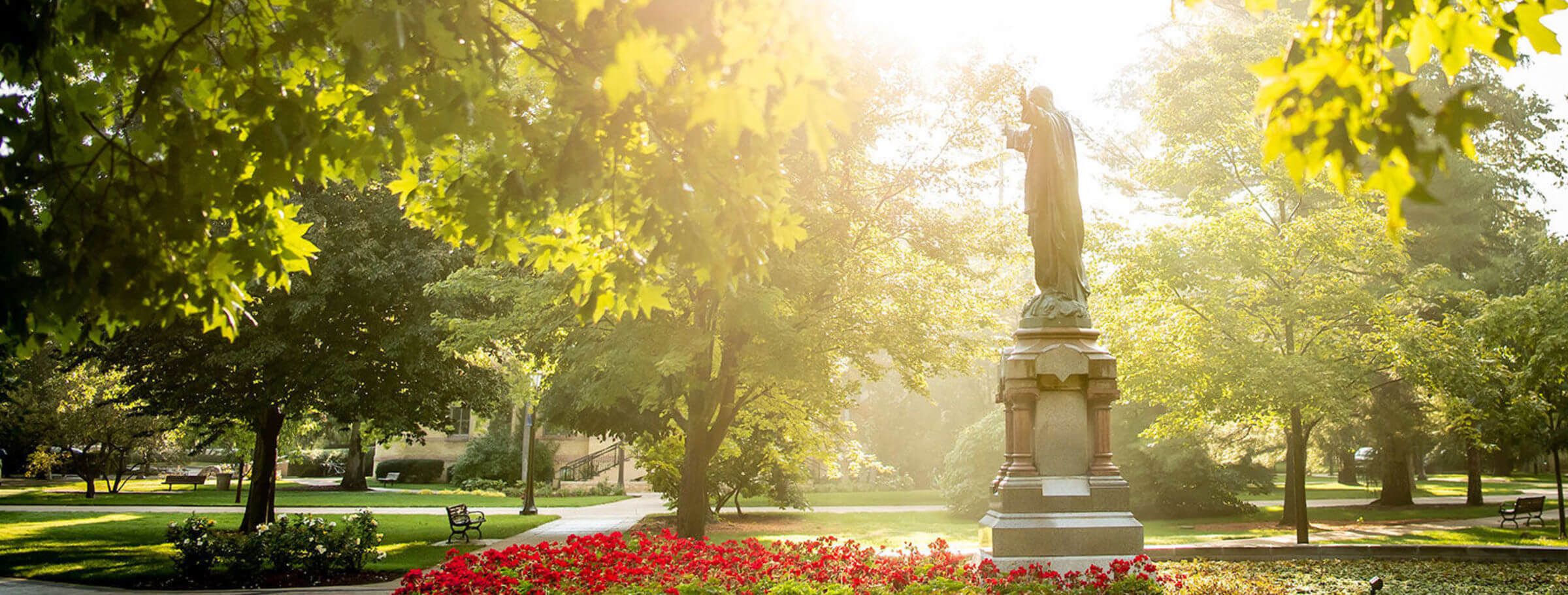
Conclusion
This address has been long, but I hope its length was not due solely to my loquaciousness. There is a lot happening at the University, and hence much to report. It is an exciting time to be part of Notre Dame. I am conscious every day that the good that happens here daily is due to the many remarkably talented, dedicated people who make up this university community. So let me end by thanking you again for all you do to make this University the force for good it aspires to be.